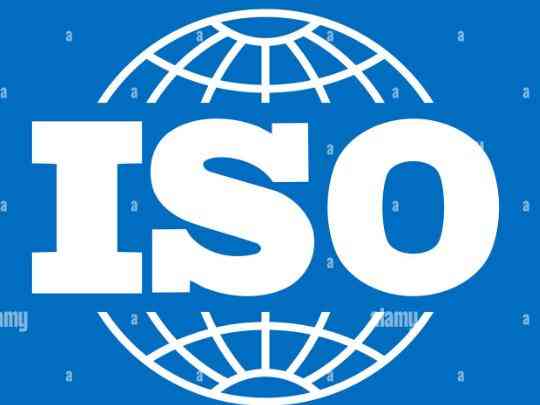|
IS0
FOR STA N DA RD IZ AT1 O N
I NTERN AT1 O N A L O RG A N IZATl O N
IS0 RECOMMENDATION
R 620
METHODS OF CHEMICAL ANALYSIS OF MANGANESE ORES
DETERMINATION OF ZINC CONTENT
(Polarographic method, for zinc content from 0.005 to 0.1 % inclusive)
1st EDITION
1967
September
COPYRIGHT RESERVED
The copyright of IS0 Recommendations and IS0 Standards
belongs to IS0 Member Bodies. Reproduction of these
documents, in any country, may be authorized therefore oniy
by the national standards organization of that country, being
a member of ISO.
For each individual country the only valid standard is the national standard of that country.
Printed in Switzerland
Also issued in French and Russian. Copies to be obtained through the national standards organizations.
---------------------- Page: 1 ----------------------
BRIEF HISTORY
The IS0 Recommendation R 620, Methods of Chemical Analysis of Manganese Ores -
Determination of Zinc Content, was drawn up by Technical Committee ISO/TC 65, Manganese
Ores, the Secretariat of which is held by Komitet Standartov Mer i Izmeritel’nyh Priborov pri
Sovete Ministrov S.S.S.R. (GOST).
Work on this question by the Technical Committee began in 1954 and led, in 1964, to the
adoption of a Draft IS0 Recommendation.
In April 1965, this Draft IS0 Recommendation (No. 779) was circulated to all the IS0
Member Bodies for enquiry. It was approved, subject to a few modifications of an editorial
nature, by the following Member Bodies :
Argentina India Switzerland
Austria Italy Turkey
Chile Korea, Rep. of U.A.R.
Czechoslovakia Netherlands United Kingdom
Germany Poland U.S.S.R.
Greece Romania Yugoslavia
Hungary Spain
One Member Body opposed the approval of the Draft:
France
The Draft IS0 Recommendation was then submitted by correspondence to the IS0 Council,
which decided, in September 1967, to accept it as an IS0 RECOMMENDATION.
-2-
---------------------- Page: 2 ----------------------
ISO/R 620 - 1967 (E)
IS0 Recommendation R 620 September 1967
METHODS OF CHEMICAL ANALYSIS OF MANGANESE ORES
DETERMINATION OF ZINC CONTENT
(Polarographic method, for zinc content from 0.005 to 0.1 % inclusive)
(Atomic mass Zn : 65.38 ; molecular mass ZnO : 81.38)
1. GENERAL INSTRUCTIONS
1.1 In the following analysis use a sample for chemical analysis of air-dried manganese ore,
sampled and prepared in accordance with IS0 Recommendation R 309, Methods of Sampling
Manganese Ores.
Simultaneously with the collection of test samples for the determination of zinc, take three
more test samples for the determination of hygroscopic moisture.
Calculate the content of zinc in ore on the dry basis by multiplying the numerical results of
the determination of zinc by the conversion factor K, as found from the following formula:
1 O0
K=
100-A
where
A is the percentage hygroscopic moisture content.
1.2 The determination of zinc in manganese ore should be carried out by analysing three parallel-
weighed test samples of the ore together with two blank tests to allow the necessary correc-
tions to be made to the results of the determination.
Simultaneously and under the same conditions carry out a check analysis of a standard
sample of manganese ore for the determination of its zinc content. The standard sample
for analysis should be taken from the same type of ore as that from which the analysed
sample was taken.
The arithmetical mean of the three results should be accepted as the final result.
-3-
---------------------- Page: 3 ----------------------
ISO/R 620 - lS7 (E)
The following conditions should be observed :
The difference between the highest and the lowest results should not exceed double the
absolute value of the permissible tolerance for the corresponding interval of zinc content
shown in the table under clause 5.2 “Accuracy of method”.
The average result of the simultaneous check analysis of the standard sample of manganese
ore for zinc content should not differ from the result shown in the certificate by more than
the f value of the permissible tolerance for the corresponding interval of zinc content,
shown in the table under clause 5.2 “Accuracy of method”.
1.3 The test samples and the residues should be weighed to an accuracy of f 0.0002 g.
1.4 Water which has been double distilled in quartzware or de-ionized water should be used
of the solutions.
during the procedure and for preparation
1.5 Meanings of particular expressions:
implies a temperature of the liquid of 60 to
hot water (or solution)
70 OC;
implies a temperature of the liquid of 40 to
warm water (or solution)
50 OC;
the first figure gives the number of parts by
diluted 1: 1, 1: 2, 1: 5 etc.
volume of concentrated acid or s
...














